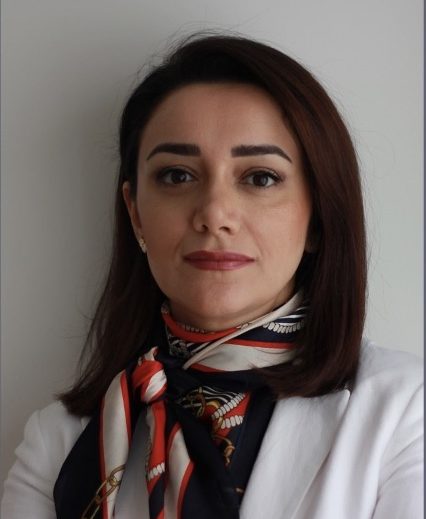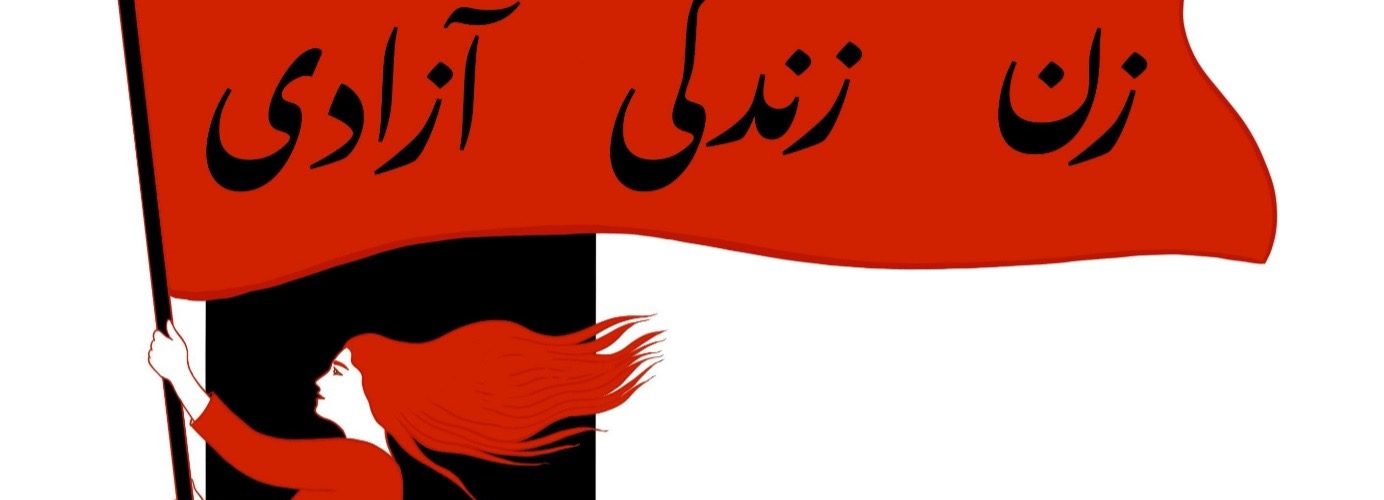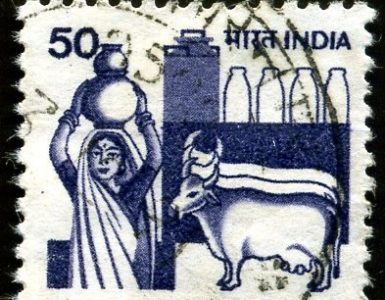Atlas Torbati
In mid-September 2022, furious and impassioned protests spread across dozens of Iranian cities following the tragic death of 22-year-old Mahsa Amini. Protests inspired by the demand for personal freedom for women followed by the slogan, ‘Woman, Life, Freedom’ erupted, from Tabriz in northern Azerbaijan to southern Bandar Abbas along the Persian Gulf coast, from Sanandaj in the Kurdish west to eastern Mashhad, the pilgrimage city and Iran’s second largest city. Tens of thousands of Iranians came out into the streets and many continue to do so to this day, despite the regime’s violent and deadly crackdowns and threats of arrest.
For the first time many Iranian men have accompanied women, shoulder to shoulder, chanting ‘death to the dictator’ and ‘we will kill, we will kill the one who killed our sister’, demanding social justice and regime change. The burning of headscarves is perhaps one of the most public and explicit rejections of the religious restrictions that are imposed forcefully by Islamic Republic upon women since its onset. The inclusivity and diversity of these protests has made them distinctive compared to the previous ones in 2009, 2017 and 2019 and this is due to the participation of various people from different cultural, religiou,s class and ethnic backgrounds.
These protests were often led by teenage girls and boys and young women and men, known as Generation Z, studying at high schools and universities. They demonstrated the bravest challenge to the theocracy in more than a decade. Iran’s Generation Z are born between 1997 and 2012 – known as daheye hashtad or the 80s (the 1380s of the Iranian calendar). They form only about 6 million of the country’s population of 83 million, and, to now, they have unarguably been among the primary leaders of the current demonstrations. In fact, a significant difference between the current and previous waves of protests has been the prominent role performed by the country’s Generation Z, also known as Zoomers.
Zoomers grew up more connected, better educated, and more socially active than previous generations. One of the most interesting and important characteristics of this generation is the sense of self- sufficiency. Unlike previous generations in Iran, they freely speak about their interests, beliefs and disbeliefs, even if it crosses the red lines of traditional, societal and religious norms and practices. According to Jabbar Rahmani, an assistant professor of anthropology at the Tehran-based Institute for Social and Cultural Studies, “this generation does not adhere to idealism and ideological idealizations like the previous generation.”
The zoomer generation are “digital natives” (Csobanka, 2016) since they have had greater access to the outside world and have grown up submersed in the social media and internet. The international language of technology and hashtags have connected them widely. Their key demand is social justice and achieving their fundamental human rights.
This generation have developed a great analytical skill through being actively present on various platforms such as Club House , Twitter, Youtube, etc to raise their voice and concerns and courageously speak out. As a result, they tend to question and criticise authority and do not accept and respect the patriarchal laws and regulations of the Islamic Republic such as the compulsory hijab. For instance a video of Sarina Esmailzadeh, a 16-year-old You-tuber who was beaten to death on September 22, demonstrates her savvy understanding of the freedom enjoyed by her counterparts elsewhere around the world. She states “We ask ourselves why aren’t we having fun like the young people in New York and Los Angeles?” In a YouTube video, she said, “We are in need of joy and recreation, good spirit, good vibes, good energy. In order to have these, we need freedom.”
The massive engagement of this generation on social media has forced the Iranian officials to introduce the National Information Network, a domestic or “halal” internet apart from the international internet used by much of the world. In fact, Khamenei, in a June speech, pushed parliament to endorse a contentious internet bill, the Regulatory System for Cyberspace Services Bill, also known as the Protection Bill. This shows a zero-tolerance policy toward anything considered hostile to the Islamic revolution’s identity.
However, the Generation Z have not limited themselves only to the online world .Through writing graffiti, preparing, and distributing announcements to invite the public to join the protests and national strikes to raise their profile outside of Iran. Another fascinating characteristic of this generation is the sense of responsibility to act collectively in strikes and protests. The similar style of posts and contents on social media, the use of hashtags and the twitter storms that they create, are examples of the strong sense of responsibly they have in order to grow and speed up this movement.
One of the most courageous performances of this generation is when schoolgirls refused to sing a song praising Supreme Leader Ayatollah Ali Khamenei after an October 13 raid on a high school in Ardabil. This was a reaction to the death of Asra Panahi, a 15-year-old girl, who was reportedly beaten to death by undercover officers. In Sanandaj, schoolgirls burned pages of their textbooks containing a photograph of revolutionary leader Ayatollah Ruhollah Khomeini. They also chanted “Death to Khamenei,” the successor of Ayatollah Khomeini.
In Tehran, schoolgirls airbrushed a photo of Khamenei on a classroom wall and replaced it with a photo of Mahsa Amini. In Tabriz another group of schoolgirls stamped on a picture of the two clerics, then tore it. Following the slogan, “Clerics, get lost,” the students at Al Zahra University, a college for women in Tehran, made bonfires across the streets during President Ebrahim Raisi’s visit on October 8. These are just a few among hundreds of images recently shared on social media by students who are part of Iran’s Generation Z. Such remarkable moments show how courageous they are in the face of political oppression and violence while fearlessly risking their lives to amplify their voice for freedom and justice
However, this is not the first time that the Iranian Gen-Z appeared in public crossing the red lines and resisting the police. In 2016 a large crowd of high school students got together to celebrate the end of school year exams at a shopping mall in the west of Tehran. The gathering was dispersed by the police with tear gas and baton. The authorities’ responses to all these moments were criminal charges, suppression, and detentions, and more recently, death by execution and a call for re-enforcing Islamic values such as compulsory hijab and increasing restrictions over social media and internet.
This fear and repression is intended to disempower the Zoomers and is meant to scare them and drive them away from social and political upheavals such as the current protests. However, in Iran, Gen-Z continue to take to the streets in defiance, even organising their own marches against the brutal crackdown of the Islamic Republic. Their willingness to take risks and their sense of entitlement to social justice has spread the message of Woman, Life, Freedom across borders. It is important to say that their bravery has inspired the global community to support the movement through posting stories to bring attention to the oppression faced by Iranians, including extrajudicial killings and torture.
The unexpected participation of this furious generation might be surprising for some and even some authority officials, but in reality, many academics and sociologists had identified such a courageous movement for some time. A few years ago, Saeed Razavi Faqih, a sociologist, and former political prisoner provided an analysis of Iran’s socio-political situation called “The eighties [Gen Z] will pass everyone” and warned about many of events and scenes that are taking place in the streets of Iran today.
His analysis was that,“this new generation has completely different demands, trends, and views and basically shares no common language with the managers and officials of the country’s administration.” While pointing out to the fact that these young people would start entering universities in 2020, he warned “as soon as they [Iranian Zoomers] become aware of their ability to influence and bring about change, this mass population ruling the universities in big and small cities will transform everything.” This issue has been highlighted by other researchers and scholars such as Zohreh Najafiasl as a ‘deep generational gap’ (2019) which is defined as detachment and lack of conformity of children from parents (Najafiasl, 2019) . In her view one of the most important features of this gap is a “sense of rebellion” against anything that is considered tradition by the youth” (Najafiasl, 2019; p.60).
Others consider this gap as the fourth driver of tension and a possible threat to the Islamic Republic’s values. Due to having a pluralistic view, the Zoomers will be hard to govern and their control will not be as easy as with previous generations. This generation is not the ideal Islamic youth that former revolutionary leader Ayatollah Ruhollah Khomeini had anticipated. Rather, they baffled the clerics with their western behaviour such as drug use, bizarre outfits, and partying. They are the children of social media who are resisting against the country’s decision-makers and no longer trust traditional media. Instead, they turn to foreign-based media.
However, in spite of years of warnings about the enormous changes and the social dynamics that the generational gap imposes, the Iranian officials have chosen to close a blind eye to this issue and have refused systematic reforms or adopting any liberal changes and developments to acknowledge uprising Zoomers’ demands and requests. Instead, the Iranian officials are utilising resources and adopting hostile policies to enforce additional constraints on those who abandon the values of theocratic government. Calling the protesters isolated, corrupt and anarchist, the Islamic Republic ostracises this cohort and does not recognise the distinctiveness of their beliefs and behaviours.
Most of the Zoomers are disgusted with the unceasing systemic corruption, hypocrisy, and the general disastrous socio-economic situation . It is important to note that this new generation of Iranian youth are also nurtured under nearly two decades of economic sanctions and international isolation impelled by a nuclear program that Iranians increasingly question. They are hopeless and have no faith in a brighter future. Therefore, the current political upheaval is a great chance for Gen Z to seize the moment to directly oppose the Islamic Republic. Zoomers see no brightness in their future, even in the decreasingly likely event that the Iran nuclear deal is revived.
Some reformist experts such as Mostafa Tajerzadeh believes that in order to resolve this predicament, officials must review and reform many of the policies in accordance with the requirements of a modern society. However, other political activists with secular views, such as Narges Mohammadi, believe that the Islamic republic is unlikely to comply with the needs of modern society since submitting to one demand would pave the way for extensive and far-reaching demands in the future. It seems that the Iranian government can neither completely suppress this new generation, nor it can ignore them. In fact, ignoring the Generation Z will only lead to further radicalization.
The recent executions of young men, and the sentences to death of many others, are the Islamic Republic’s aggressive response. Majid Reza Rahnavar, Mohsen Shekari, Mohammad Mahdi Karami and Seyyed Mohammad Hosseini were executed recently for allegedly killing two members of the parliamentary Basij forces and wounding four others. All these young men were convicted of “moharabeh,” or “waging war against God,” and after expedited legal proceedings, were sentenced to death. Human rights advocates have emphasised the impropriety of the trials, dearth of legal representation, and the pervasiveness of “coerced confessions” as the result of the systemic torture.
Although the outcome of the current protests is far from certain, one thing is clear, Iranian Zoomers are determined to bring change, have radical ambitions for their country’s future, and an influential role in shaping their history. They will have a very active role to play.
References:
Csobanka, Z. E. (2016) The Z Generation. Acta Technologica Dubnicae, 6 (2)
Najafiasl, Z., 2015. Intergenerational Gap: An Emerging Phenomenon in Iran. IAU International Journal of Social Sciences, 5 (1), 59–70.

Atlas Torbati is a lecturer on MA Understanding Domestic Violence and Sexual Abuse (UDVSA) at Goldsmiths, University of London. She is also a senior tutor at the Department of Social, Therapeutic and Community Studies. She has extensive experience in teaching the Theories of Gender-based violence, Groupwork studies, National and International Policies of Gender-based Violence and Social Research Methods. Twitter: @atlasi82
Header Image Credit: Roshi Rouzbehani
TO CITE THIS ARTICLE:
Torbati, Atlas 2023, ‘Iranian Zoomers, A Generation of Bravery, Hope and Invincibility’ Discover Society: New Series 3 (1): https://doi.org/10.51428/dsoc.2023.01.0004




